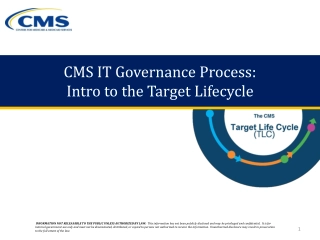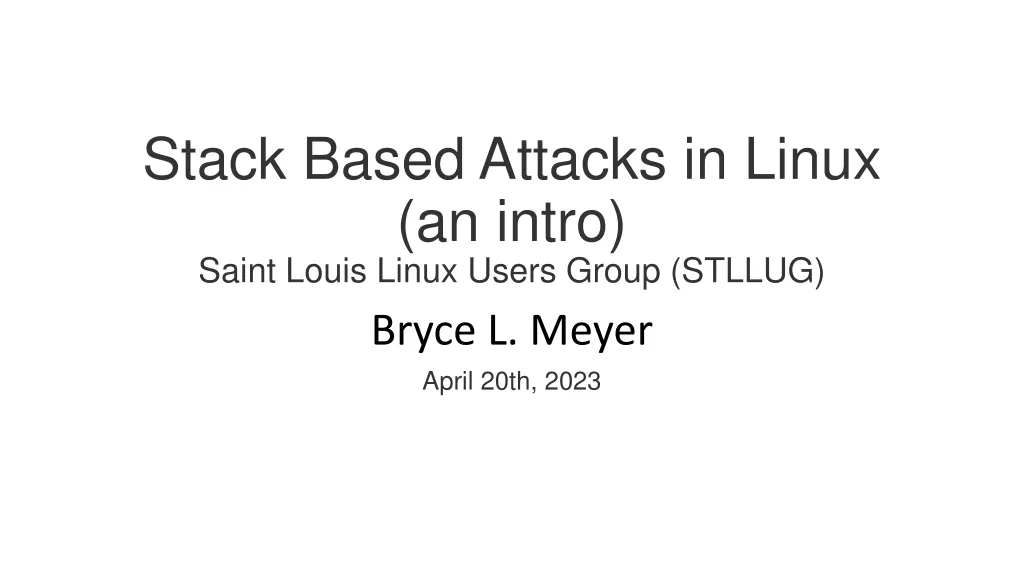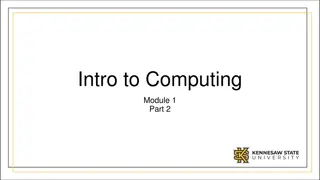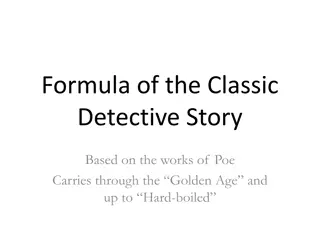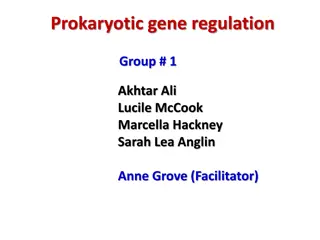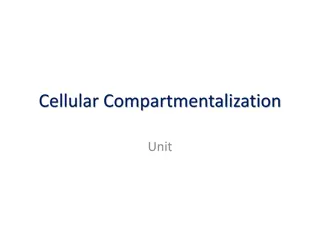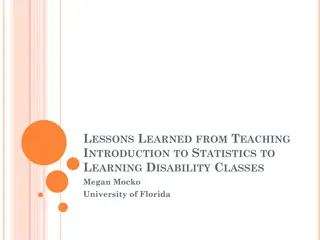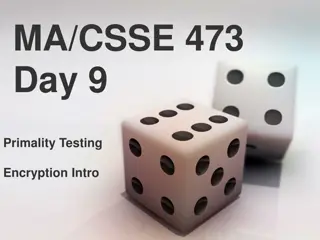
Understanding Particle Colliders
Explore the interaction region, collision points, and beam colliding mechanisms in particle accelerators. Learn about the complexities of storing and colliding beams, including the evolution of storage ring technology. Discover how modern colliders like PEP-II and KEKB optimize interactions for high-energy physics experiments.
Download Presentation

Please find below an Image/Link to download the presentation.
The content on the website is provided AS IS for your information and personal use only. It may not be sold, licensed, or shared on other websites without obtaining consent from the author. If you encounter any issues during the download, it is possible that the publisher has removed the file from their server.
You are allowed to download the files provided on this website for personal or commercial use, subject to the condition that they are used lawfully. All files are the property of their respective owners.
The content on the website is provided AS IS for your information and personal use only. It may not be sold, licensed, or shared on other websites without obtaining consent from the author.
E N D
Presentation Transcript
The Interaction region The Interaction region Mike Sullivan USPAS 2022 MS_2 1
Outline Outline The collision point Final focusing elements How to collide beams Luminosity Finding collisions Summary and conclusions 2
The collision point The collision point The early matter anti-matter colliders used a single ring to store both beams This works because a positron going in the opposite direction looks like an electron (Why is this?) The two beam energies were equal by definition Initially one bunch was in each beam resulting in two collision points around the ring The second collision point in some cases was either made very weak by having large beta functions or electrostatic plates could be used to separate the beams Second generation colliders used several bunches in each beam to generate several collisions around the single ring for several detectors Proton colliders have always had to use two storage rings This was the case until the B-factories came online in the 1990s 3
Colliding the beams Colliding the beams With both beams in the same ring the beams automatically collide and collide head-on At most we can have 4-6 bunches in each beam (equal to the number of collision points around the ring) CESR at Cornell developed a bunch train scheme with a pretzel orbit to avoid extra collisions All modern colliders and future colliders have two storage rings Pioneered by the B-Factories in the 90s This allows us to vastly increase the number of colliding bunches (~1000) Now we need to make sure the beams do in fact collide Two storage rings also mean that the beams do not collide head-on The PEP-II B-factory was able to collide head-on because the beam energies were different. The cost of head-on collisions was the need to have very powerful bending magnets very close to the Interaction Point (IP) and there was also a limit to the minimal bunch spacing in each ring. All modern designs now have a crossing angle at the collision point CESR at Cornell pretzel scheme orbits. 4
PEP PEP- -II and KEKB Interaction Regions II and KEKB Interaction Regions PEP-II Interaction Region 5
Collisions Collisions In order to maximize the physics event rate, we want to squeeze the beams to as small a spot as we can at the collision point However, we also want to keep the beam bunches inside the rings so that we can get another collision out of them when they come around again If we squeeze too hard the transverse forces from the two colliding bunches will disrupt the particles in each bunch too much and we can end up with bunches that are either blown up or even lost The ILC has the advantage of not needing to keep the beam and hence can squeeze the beam bunches much harder thereby getting much more luminosity from a single collision 6
Colliding bunches Colliding bunches The crossing angle in most accelerators is small. Total angle between beams is 25 mrad for the EIC, 50 mrad for the FCCee, 33 mrad for the CEPC and 14 mrad for the ILC. (1 deg. = 17.5 mrad.) One loses luminosity or interaction rate by the introduction of a crossing angle. The effect is small if the angle is small (Cos ). A small crossing angle allows for the possibility of crabbing the beam bunches to make the collision more like a head-on collision. 7
Crabbing the beam bunches Crabbing the beam bunches The cavities produce a +X kick to one end of the bunch and a X kick to the other end. The picture is a little simplistic. The crab cavities induce a rotation about the Y axis to the bunch that is such as to make the collision occur as shown but the bunch continues to rotate, and the rotation is then cancelled at the following crab cavity. 8
Nano Nano- -beam collision beam collision The SuperKEKB at KEK in Japan is trying a new scheme called the nano-beam collision proposed by Pantaleo Raimondi. Essentially, the idea is to make the beams small in X and very small in Y at the IP and make the crossing angle large (83 mrad in this case). The beams only collide through each other near the IP (see picture). One loses some because only a part of each bunch is colliding. But one gains more overall because one can squeeze the *y value way down. The *y usually has to be near the size of the bunch length (~ 5 10 mm) or else the ends of the bunch do not get focused down while colliding. This is called the hourglass effect. SuperKEKB is aiming for a *y of 0.3 mm. This is a direct gain in luminosity of ~20. NIMA vol 907, pgs 188-199 9
How to squeeze (1) How to squeeze (1) We want to squeeze the beam in both X and Y as much as we can at the same Z location The harder we squeeze the more likely an interaction occurs This is contrary to what one usually does in a regular lattice In an electron or positron ring it is more difficult to squeeze in X than in Y because there is a non-zero X emittance generally determined by the synchrotron radiation (SR) that occurs in the horizontal bend magnets (more on this later) At some level, this SR sets a minimum horizontal emittance and hence X spot size There are lattice tricks one can use to minimize the X emittance The vertical emittance is naturally zero for electrons (if there were no XY coupling or intrabunch interactions) for a horizontal ring (which is all past, present and most future collider designs) However, a very small vertical emittance reduces the bunch current threshold for intrabunch scattering (i.e. Touschek scattering) and the bunch lifetime can subsequently become very short (min. or even sec.) 10
How to squeeze (2) How to squeeze (2) From the previous slide we see that the natural choice for an e+e collider is to squeeze the Y dimension more than the X dimension We do this by using two quads as our final focus doublet The first quad seen by the beam is then an X focusing quad and The last quad seen by the beam before reaching the IP is the Y focusing quad Note that the Y focusing quad defocuses in the X plane and vice versa for the X focusing quad. We must increase the strength of the X focusing quad in order to cancel the defocusing of the Y quad in order to get the minimum X size at the IP. The X focusing quad must over focus 11
Crossing angle Crossing angle With a crossing angle the lattice functions are pretty much the same as in the previous slide The difference is in the central region where we have symmetric masking for the incoming SR on the previous slide A crossing angle allows us to remove the masks that are on the outgoing beam line Drawing of the FCCee interaction region design. We need only one mask on the upstream side to block the last bend magnet SR. More on this later. 12
EIC collision EIC collision The collision between a proton beam and an electron beam has further implications Different kinds of particles Proton beams tend to be more round (It is actually difficult to make a flat proton beam why is this?) Electron beams tend to be flat (the vertical emittance is usually small compared to the horizontal emittance) We want the spot sizes of each beam at the collision point to be as much the same as possible in order to maximize the interaction rate Also, the bunch length is important especially with any crossing angle Here again, proton beams tend to have long bunches (~5-10 cm) and electron bunches are usually ~1 cm or less 13
Luminosity Luminosity How do we know if we are colliding and how do we know how well we are colliding? Luminosity formula We have to find an interaction where we know how to calculate the cross-section Known physics We also need a detector that can see the interaction we have calculated ?1?2?? ? = cm-2 s-1 2 2+ ?2? 2 2+ ?2? 2 ?1? ?1? N is the number of beam particles in a bunch fc is the collision frequency The sigmas are the Gaussian sigma values for the x dimension and the y dimension of each beam (1,2) We assume the bunch lengths are the same 14
Lumi (2) Lumi (2) The equation for the luminosity looks reasonable If we increase the number of particles in either colliding bunch, we should increase the interaction rate If we decrease any of the spot sizes at the IP, we should increase the interaction rate There are several other ways of calculating the luminosity based on other information we might have concerning the beams And based on certain assumptions we make concerning the beam parameters ?? ?? ? = 2.17 1034 1 + ? cm-2s-1 = beam-beam tune shift (~0.05-0.1) (assumed the same for both beams) r = beam aspect ratio ( y/ x) (assumed the same for both beams) I = beam current in A E= beam energy in GeV y* = the vertical function at the IP in cm The last 3 values can be evaluated for either beam 15
Lumi (3) cross Lumi (3) cross- -sections sections Cross-sections have units of area (cm2) We still need a known interaction that we are able to calculate the cross- section of For e+e colliders we use elastic scattering (Bhabha scattering) We can calculate the cross-section for this interaction and then all we have to do is calculate the acceptance of our detector (usually by simulation) We want to know what fraction of the scattered particles are seen by the detector The two balls will interact (bounce off each other) if the centers are within 2r of each other where r is the radius of the ball(s). This corresponds to an area defined by a circle with radius 2r or ? = 4??2 ? the cross-section in cm2 (if r is in cm) for this interaction. What is a barn? This is a unit of area defined as 100 fm2 (=1x10-28 cm2). It was coined during the Manhattan Project in the hope of hiding or obscuring discussions about nuclear cross-sections. It is about the size of a U nucleus and is considered a large number. [ref. Wikipedia: Barn (unit) ] 16
Bhabha cross Bhabha cross- -section section ?? ? e = electron charge E = beam energy = ? = 1 ?2= 0.3894 ???2 ????? ? = ?2 ? = 1 137 This is the ultra-relativistic form where we have neglected electron mass terms in the calculation. (No threshold effects.) time 17
Lumi (4) Lumi (4) You may have noticed that if we have a cross-section number (cm2) then if we multiply it by the lumi value we get a number per sec Therefore, the rate of events we see in our detector is a measure of the lumi We must be sure that the detector sees only the events we calculated If the detector sees other events as well as our calculated events, then we will get more counts than we should, and our number will be wrong Since the Bhabha event is elastic scattering, we should be able to detect both scattered particles and they should be back-to-back wrt each other so if we put another detector on the other side of the IP directly opposite of our initial detector, we can ask for a simultaneous hit in both detectors We can be even more restrictive if the detector can measure energy as well as position. Then we can ask for the detected event to have equal energies and that the energies be the beam energy. 18
Lumi (5) Lumi (5) Now suppose our new collider has entered a region of New Physics and the Bhabha scattering cross-section is no longer valid because of our assumptions when we made the calculation What assumptions??? We assumed the electron (and positron) are point particles We assumed that neither the electron nor the positron have excited states We assumed the electric field of the particles follows 1/r2 Now actually, the theory of the electron says that the field strength of the electric field gets strong enough to start to polarize the vacuum and therefore the field strength starts to diminish as we get closer to the center of the field This predicted effect was measured for the first time at Tristan, the e+e collider at KEK in Japan, when the beam energies got up to 30 GeV 19
Lumi (6) Lumi (6) What can we do to cross-check that the Bhabha rate is as expected? We can select another cross-section to calculate and see if the two numbers agree with each other An often-used cross-section is + production. This cross-section is very much smaller than the elastic scattering cross-section so we will need to run for a while before this cross-check can be used but it is a very good check. Now, of course, if we are in New Physics territory then this cross-section may also be different than we expect. But it is unlikely that the differences would be identically the same. If we start to see discrepancies in these calculations, then we would dig in and calculate other expected cross-sections and things might start to get very exciting 20
Muon pair production Muon pair production Where 1/137 and s = (Ecm)2 time Show that the total cross-section is ? =4??2 3? 21
Practical lumi signals Practical lumi signals The detector folks want to be able to precisely measure the luminosity so that they can carefully measure the rate of a particular process and compare it with theory (<1% is the usual aim) The accelerator folks don t care so much about the absolute value (something like 15% would be fine) but they want a lumi signal that is as fast as possible so they can see if a knob tweak (or a step in a feedback loop) makes the lumi better or worse A fast lumi signal must be from an interaction that generates a very large number of events (at least on the order of hundreds per second) into a detector 22
High rate lumi signals High rate lumi signals If we go back to the Bhabha cross-section we notice that the first term is very much like the + cross-section The first term is the annihilation and creation diagram However, the other terms actually have a singularity at = . The overall cross-section goes to infinity. In reality there are physical cutoffs (and quantum effects also come into play) The very forward scattered events will stay inside the stored beam anyway (they end up contributing to the overall disruption of the bunches when they pass through each other) and also contribute to the non-gaussian beam tails So, a Bhabha detector at very low angles to the beam axis will have a large rate But what about when the machine is just turning on and the actual lumi is low? Many times (almost all times?) the accelerator is completed before the detector is ready so the accelerator needs a lumi detector of some sort that can be running independent of the main detector 23
Radiative Bhabhas Radiative Bhabhas This interaction is second order after the elastic scattering terms Here an extra photon is emitted along one of either the incoming or outgoing electron or positron For the detector, the photons coming from the outgoing (scattered) particles are important For the accelerator, the photons emitted by the incoming particles are of interest There are 4 possible extra photon emissions all shown here together. The photons emitted by the incoming beam particles are nearly colinear to the incoming particle. This means the photons travel very close to the incoming beam axis This cross-section also diverges as the emitted photon energy gets small. We are again saved by physical restrictions (i.e., the beam pipe size) as well as quantum effects. 24
Radiative Bhabhas (2) Radiative Bhabhas (2) The detector for these very forward going photons is usually outside of the regular detector acceptance and several meters downstream of the interaction region It is sometimes called a zero-angle detector The EIC collider intends to use this interaction as a lumi measurement In fact, the detector for this interaction has to be located close to (and sometimes inside) the first bend magnet following the collision The detector usually cuts out the lower energy photons from this interaction The main reasons are 1) the beam pipe thickness and 2) the low energy photons from this interaction are swamped by synchrotron radiation photons Even so, the rate of radiative Bhabha events is still high, and this detector should be able to measure the luminosity from a single beam bunch The accelerator team can learn a great deal by seeing individual bunch luminosities This allows them to make sure each bunch is contributing as it should 25
Example of lumi differences along a bunch Example of lumi differences along a bunch train in PEP train in PEP- -II II This picture was taken when we discovered why the luminosity increase we expected to get when we doubled the number of bunches (from ~400 to ~800) did not materialize. It turned out that we had a problem with Secondary Electron Yield (SEY) from SR photons striking the beam pipe surface and releasing electrons. These electrons are attracted to the positron beam and ended up increasing the positron beam size. The large gaps in the overall train allow the electron cloud to disperse and the first few bunches in the train have the highest luminosity. 26 from F.-J. Decker, et.al., Complicated Bunch Pattern in PEP-II , DOI: 10.1109/PAC.2001.987243
Getting the beams to collide Getting the beams to collide Ok, we are squeezing the beams as hard as we dare and making small spot sizes at the IP Sizes of order 10s of m for X and couple of m for Y (even smaller Y size for the KEK nano-beams) Now, how can we get them to collide? We have to perform some sort of XY scan and hope to see a signal in the lumi detector But the beams are a few m in size and they may be as much as 100s of m apart this could take a while especially if the lumi signal is not very strong which can be the case when the machine is just turning on However, there are long range effects generated by the entire beam bunch 27
Beam Beam- -beam deflection beam deflection If we can get the bunches to within a few of each other then we can look for an orbit deflection of the outgoing bunches The combined field of one bunch will kick the particles in the other bunch causing an outgoing orbit deflection of the entire bunch seen by bpms The X is usually the largest so we should scan in the X plane looking for this deflection then shift the vertical position of one of the beams and try again This greatly reduces the number of X scans needed since the vertical moves are in step sizes of a one or two X s Once we see a deflection, we can then assume the X position is close and then do a Y scan to get the y positions closer. Sometimes a single Y scan is all that is needed. Once the lumi signal gets strong enough we can use a feedback loop that can maintain the collision by dithering one beam against the other beam and checking the lumi signal 28
Summary Summary Modern and future colliders have two storage rings one for each beam We want to squeeze the beam bunch into the smallest size we can at the IP and yet still leave the bunch mostly unscathed so that it can collide well when it comes around to the IP again (10s of s later) Two rings means that we have to get the beams to collide they do not collide naturally We need a fast lumi detector to tune on when we tweak various knobs in the accelerator and in order to keep the beams in collision with a feedback loop 29

